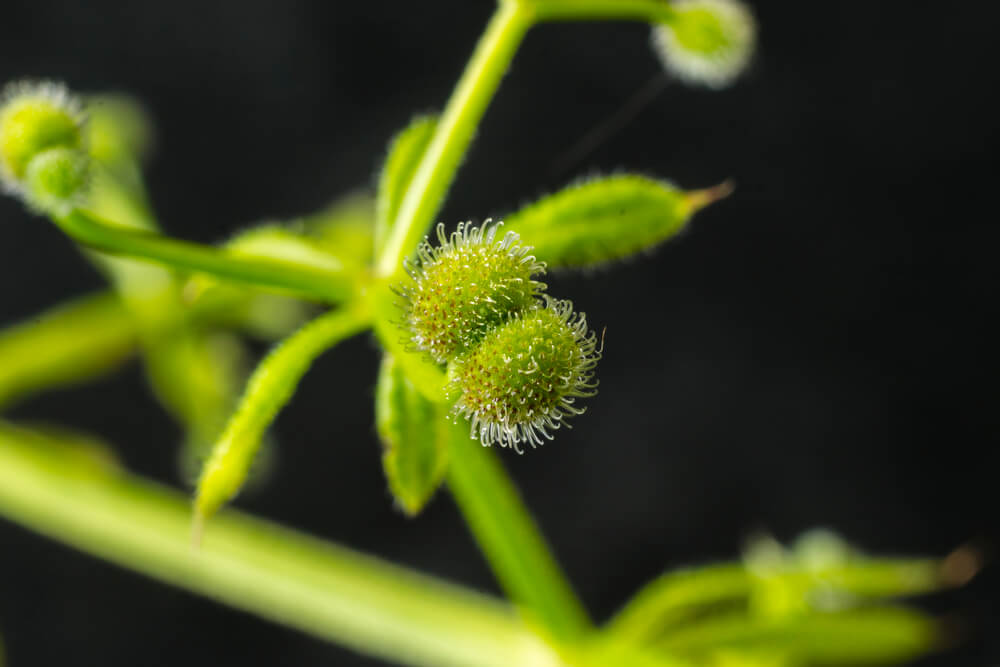It’s all about the microhooks.

You might be familiar with catchweed by one of its other names: cleavers, goosegrass, sticky willies or, sometimes, the velcro plant. This plant, native to Eurasia and Africa but now widespread elsewhere, gets many of its names from the tiny, Velcro-like hooks covering its stems, leaves and seeds. Catchweed, Galium aparine, uses the microhooks that cover its body to attach seeds to passing animals by sticking to their fur. The plant is edible as a green or herb, although it benefits from a blanch to remove all those hooks.
Researchers at the Genoa-based Italian Institute of Technology recently developed artificial microhook prototypes based on the design of those found on catchweed plants. The artificial microhooks are intended to be used on other plants. For fabrication, the researchers used a 3D printer, which extrudes some kind of malleable substance in a precise pattern, where it can quickly cool and harden. Melted plastic is probably the most common 3D printing material, but in this case, the researchers wanted something biodegradable and found isomalt (a sweetener that hardens quickly and resists crystallization; it’s often used in sugar-free candy) to be a good solution.
What’s the point of making biodegradable, catchweed-inspired microhooks? Plenty, according to the researchers. Their first projects using these hooks are pretty ambitious. In one possibility, the microhooks can pierce another plant’s vascular system to deliver some kind of treatment (antibacterial, antifungal, fertilizer, that kind of thing) while barely harming the plant at all. Think of it as sort of like a nicotine patch, except this one will safely dissolve.
Another possibility: an artificial catchweed-hook sensor package, which can measure a plant’s health by clinging on to a leaf of stem. And, in the most exotic but not the most obviously useful example, “the researchers have come up with a microrobotic system capable of using microsteps to move over the surface of the leaves,” reads the press release. A tiny robot running along leaves using synthetic catchweed hooks? Sure, I guess!